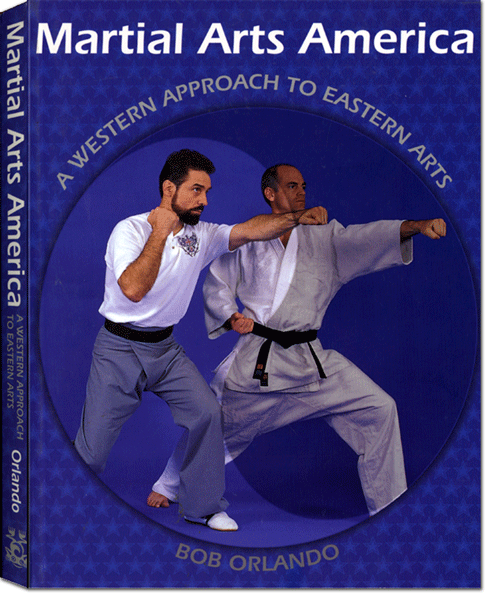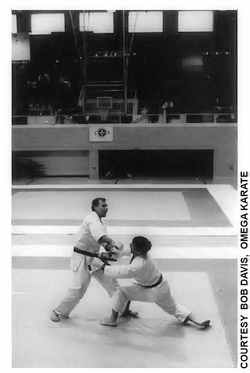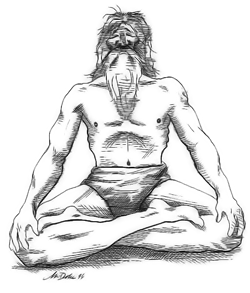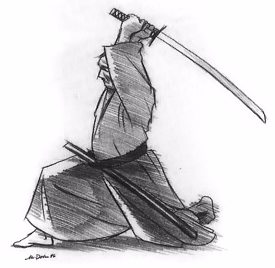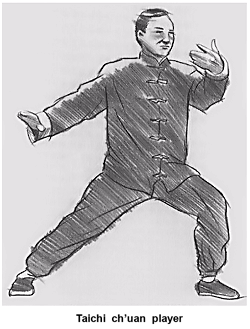
Asian martial arts are as diverse as they are popular. In the United States you can study fighting and martial arts from China, Korea, Japan, Okinawa, the Philippines, Indonesia, Thailand, Malaysia, Vietnam, and India. The Chinese arts offer more variety (comprise more individual styles) than most of us can even imagine. They range broadly from the direct, often linear, rapid-fire, in-your-face wing chun, to the gymnastic and acrobatic modern wu shu, to the graceful, almost hypnotic t'ai chi ch'uan. And literally hundreds of distinct systems and styles fill the space between these three. Then there are Korean arts that focus primarily on high kicking (those less flexible need not apply). The requirement for flexibility is one reason so many young people take up tae kwon do, Korea's national martial (and now Olympic) sport. (The vast number of schools doesn't hurt the art's popularity either.) Japanese karate came from Okinawa. Because of this, Japanese and Okinawan martial arts are often lumped together. But karate is not the only art to come from the Land of the Rising Sun. Japanese and Okinawan arts also include extensive classical weapons training as well as a suite of grappling styles (primarily judo, jujutsu, and aikido). Their weapons systems include bladed, impact, and throwing or projectile weapons like the classical Japanese sword, the grain flail or nunchaku, and the bow and arrow. Indomitable in spirit, the Philippine islands have repeatedly endured foreign rule. Fighting arts and systems there developed with a strong focus on survival, so there is considerable emphasis on weapons training. Often the training in other Asian martial arts moves from empty-hand to weapons, but in the Philippines, just the opposite is true. There, the student begins with sticks and knives and moves to unarmed training. Among Filipinos there are nearly as many systems and styles as there are villages and masters. Still, they all fall within three major groupings: kali from the southern end of that island nation, arnis from the northern end, and escrima, practiced throughout the middle of the island chain. Here, too, the number of systems or distinct styles within these three major genres of Filipino arts number in the hundreds. I haven't even scratched the surface here, and I've only touched on some of the better known Asian arts. Among the plethora of other martial arts available to us today are the increasingly popular Brazilian jiujitsu; Brazilian capoeria; Malaysian bando; Korean tang soo do, hapkido and hwarang do; Japanese iaido; Indian kalaripayit; Okinawan kempo and Chinese kenpo; Japanese kendo; Chinese kuntao; Indonesian pentjak silat; French savate; and muay thai from Thailand. Of all these and more that are available (and again, this is the briefest of lists) stand-up striking arts such as karate remain the most popular in the United States. I use the term "karate" here in the most generic sense to mean, as it is defined in Webster's New Collegiate Dictionary, any "Oriental art of self-defense in which an attacker is disabled by crippling kicks and punches." Kung fu, tae kwon do, and a host of other arts are included under this broad definition. Martial arts may be studied and practiced solely for fitness; however, what makes them an attractive alternative to other fitness programs is what they offer in their four main areas of expression: sport, philosophy, art, and self-defense. Historically, each expression developed in response to specific needs, and by looking at each one we can get a better feel for the broad attraction that the martial arts hold.
Still, with the right approach, the proper attitude, and the appropriate forum, participation in sporting and competitive events can contribute positively to the development of a well-rounded martial artist. Like other artisans, martial artists enjoy having their work appreciated. Martial games provide a platform for demonstrating the artist's skill. They offer the practitioner a chance for recognition among his peers. More important, sport competition provides an excellent opportunity to exchange ideas and learn from others of differing perspectives, styles, and opinions. This alone is reason enough for participating in the sporting aspect of the martial arts.
Martial Art PhilosophiesA number of practitioners devote their lives to martial art study primarily for self-cultivation. Through their practice of the art, they seek to attain some glimpse of the "Wisdom of the East," as set forth in the various philosophies of Taoism, Buddhism, Zen, and the like. For example, many practitioners describe karate-do (the way of karate) as a journey that begins with the physical and ends with the spirit. The goal, for them, is development of the spirit. How? Through physical karate training. In this way, karate-do parallels hatha-yoga with its self-purification through physical application.
A martial art is an "art." It is not, however, an art form. It is a skill acquired by experience, study, and observation. Also, it is something you can enjoy and participate in almost your entire life. But again, it is, first and foremost, an art of self-defense. Why else is it called "martial"?
Martial Arts For Self-DefenseDespite the attraction the other areas of the art have, self-defense remains the primary motivator for most who begin martial art study. I say this because even those who pursue martial arts for the reasons already discussed often say that they also took up the arts for their self-defense benefits. Self-defense is not simply a pragmatic motivation for studying the arts, for beauty and art are inextricably intertwined in this, the original purpose of martial art development. Self-defense study is simultaneously stimulating and relaxing. It challenges us, demands more, and it rewards our efforts. In more than one way it is like health insurance. Practitioners are rewarded because not only do they benefit from the strenuous physical exercise, they also benefit from the skills and abilities they develop – skills that prepare them, should the need arise, to defend their lives and the lives of their loved ones. This kind of health insurance simply isn't available anywhere else. The difference between those who "also took up martial arts for their self-defense benefits" and the student studying primarily for self-defense, is motivation. For all the other avenues self-defense-motivated martial artists may eventually take in their walks down the martial path, for all of the other interesting and exciting things they may eventually explore as they stay the course, one thing remains constant: the desire for confidence in their abilities to protect their families and themselves. This, coupled with the desire for excellence in this area, remains the martial artist's primary motivation for study and participation in the art.
Why Martial Arts?Martial arts are so broad that they can be studied and practiced for fitness, sport, artistic endeavor, self-defense, or all of the above. This breadth of expression is part of the attraction they hold. But let me give you in one word, why most people take up martial arts: choice. We all lead busy lives, and making the most of our time is important. Most of us recognize the need for exercise but find most fitness programs just boring hard work. Martial art study and training is hard work, but while it is also good exercise, it is anything but boring. But martial art study offers something else that few exercise programs can match: confidence. Other exercise programs may strengthen your body, giving you more confidence in general, but martial art training breeds a level confidence that springs only from the knowledge that you are not easily threatened or intimidated. In the street or in the board room, you now have choices. Untrained, you have no choice but submission. Trained, and you choose whether to yield or stand your ground. This kind of choice is available only to those who first choose to study martial arts. |
|
©Copyright Bob Orlando, 1993-2016 All rights reserved |
http://www.OrlandoKuntao.com
E-mail: Ron@OrlandoKuntao.com |
Last update:
Aug. 6, 2016 by Bob Orlando |
